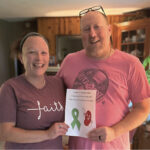An 80-year-old man enters the hospital upon developing fevers about one month after getting a heart valve replacement. His new heart valve is found to be infected and he is started on antibiotics. About two days later, he suffers a massive stroke, loses control of the left side of his body, and is unable to speak or communicate.
A decision needs to be made on how aggressively to treat the patient. However, his nearest relative is a daughter whom he has not seen or spoken to in 20 years. She does not feel comfortable making decisions for him. Consequently, his physicians feel obligated to “do everything.” He is intubated and placed on a feeding tube. His status does not improve and he is unable to breathe on his own or eat anything by mouth. Consequently, he is kept on the ventilator and a permanent feeding tube is placed. He is transferred to a nursing home where he remains unresponsive. He dies several months later.
The above case illustrates the importance of preparing for end-of-life decisions. Medical science is able to use extraordinary means to keep people alive. We can breathe for them with a ventilator, do the work of their kidneys through dialysis, and feed them through a tube directly into the stomach. Unfortunately, these life-saving measures also can prolong death and suffering. In the absence of instruction to the contrary, your physicians will feel obligated to “do everything,” even if there no real chance of regaining a useful existence.
How can you prevent this from happening to you? First, discuss your wishes with your family. Let them know what you would be willing to go through and under what circumstances. Keep in mind that these decisions are not straightforward. Most of us would be willing to be put on a ventilator, go on dialysis, or even have a feeding tube placed, if there was hope that we would recover. Few of us would be willing to do any of the above if they simply prolonged our death.
The next step is to formulate a living will so that there is a written guide to your preferences for end-of-life care. The living will should be specific about what modalities you are willing to use (mechanical ventilation, feeding tubes, dialysis, etc.) and under what circumstances you are willing to use them (short term or long term).
Living wills are legally binding. However, most living wills will only take effect if your “situation becomes hopeless.” Unfortunately, it is often difficult to determine when all hope is lost. I have had families that want almost nothing done and families that believe that everything should be done while they wait for a “miracle.” A living will alone will not protect you.
You will need a medical decision-maker. This is typically a family member. However, you can appoint a legally binding medical power-of-attorney. Whoever speaks for you should be someone whom you trust and someone who can advocate for you. If you become seriously ill, you want someone who knows your end of life preferences, knows what you would be willing to go through (what your definition of hopeless is), and will be able to communicate your wishes to your physicians. Keep in mind that extraordinary circumstances may occur. For example, I have seen patients who are willing to undergo almost anything in order to be there for the graduation of a child, the birth of a grandchild, or a simply to reach an anniversary. Your medical power-of-attorney should be able to understand these issues and be flexible enough to deal with unusual circumstances.
Medicine has tremendous power to prolong life, which can, unfortunately, turn into merely the power to prolong suffering. In the absence of documentation of your wishes or of someone who can speak for you, your doctors will feel the obligation to use every means at their disposal, even if they feel there is no real hope. It is very important that you protect yourself by discussing your wishes with your family, formulating a living will, and designating a medical decision-maker.





